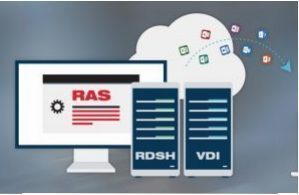Once we successfully add our Remote Desktop Session Hosts (RDSHs), we can start publishing applications. This blog post introduces the remote application publishing process in Parallels® Remote Application Server (RAS).
To...
The advent of virtualization technology has brought revolutionary changes to IT procedures. Many IT components, from servers to networks, are now virtualized. With the smartphone dominating the IT world, “virtual app” and “application...
Remote Desktop Services (RDS) is a thin-client architecture available on Microsoft Windows that allows delivery of virtual applications and desktops, or thin clients, to remote users. Introduced as Terminal Server in Windows NT and...
Using Parallels® Remote Application Server (RAS), end users can open a file on their device using published applications. This may come in handy for employees using their own devices on the go.
How-to Guide
To make use of...
Have you ever wondered about backing up your Parallels Remote Application Server (RAS) Console settings? Moreover, have you ever wanted to set this up automatically? In this guide, we will explore how to create automatic backups for...
Remote Desktop Services (RDS) is an important component of Microsoft Windows Server that enables users to access session-based desktops. Along with Windows 2008R2, Microsoft renamed Terminal Services to RDS. With RDS, organizations can...





